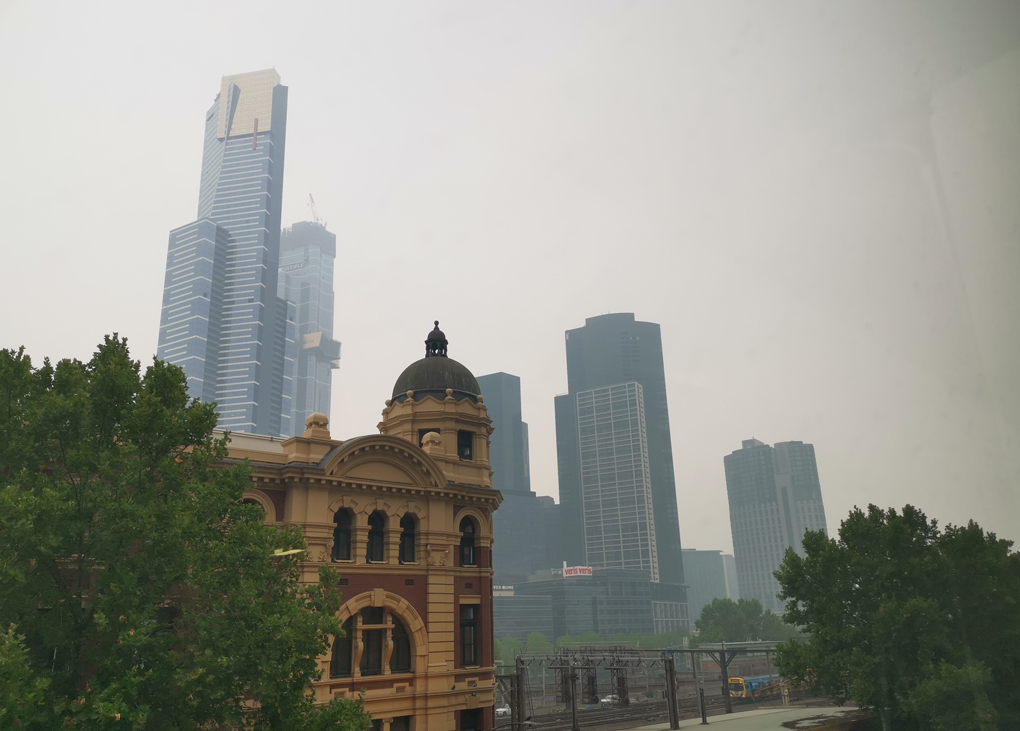As a result of the bushfires burning throughout Australia, smoke has been affecting large parts of the country, including capital cities. On Monday in the Melbourne CBD, the air quality index (AQI) peaked at 213, considered “very unhealthy”. The suburb of Box Hill experienced an AQI of 372, considered “hazardous”.
According to the Environment Protection Authority (EPA) Victoria, Gippsland, North East, Alpine Regions, Latrobe Valley and Geelong have also been heavily affected by smoke. It is believed that these conditions could continue until Sunday, January 12.
Smoke presents a particular challenge for those working outdoors, such as HVAC&R technicians. EPA Victoria called a media conference to discuss the measures that people could take.
“People really need to be aware of what they are doing, what the air quality is like around them,” said Victoria’s Chief Environmental Scientist Dr Andrea Hinwood. “It’s a really good idea for people to have their own plan as to how they’re going to take a break.”
Victoria’s Chief Health Officer Dr Brett Sutton spoke about the symptoms that people may experience, including cough, as well as nose, throat and eye irritation.
“People with pre-existing heart and lung conditions can get much worse symptoms,” Dr Sutton said. “They can get shortness of breath, chest tightness, wheezing and really significant cough. And we know it’s a threat to life for some people as well. So for those people in particular, they really need to try and minimise their exposure to smoke.”
Dr Sutton warned that although face masks can help, especially for vulnerable individuals, they are not a cure-all. He noted that people should look specifically for P2 or N95 masks.
“Those masks can filtrate the particles that we’re talking about here, and we know that for the most vulnerable people, that may be a useful additional protection. It’s especially the case if you can’t get out and relocate to areas with better air quality, or if you can’t stay indoors – if you’re forced to be outside for work purposes or other purposes, then that might be a time to use a mask.
“But it is important to recognise that masks can give you a false sense of security; masks are not something you put on so that you can go outside, when we’re telling you to stay indoors. And for some people it can increase the work of breathing and they can get quite fatigued with it, so it’s not for everyone. They need to be fitted properly.”
Dr Sutton emphasised that surgical masks and bandanas are “not going to do the job”.
When asked about obligations for employers, Dr Sutton said that occupation health and safety laws must be considered, as well as the specifics of each case.
“There are obviously people who are now at the front line, working,” he said. “They’re given masks. Some of them have respiratory apparatus. But for others it might be a case of having periods of respite, or making sure that they are monitoring their symptoms and reporting appropriately.”
A spokesperson for WorkSafe Victoria says:
“Employers must provide a safe and healthy workplace for their workers. If you are concerned about the impact of smoke haze from the Victorian bushfires, visit the Vic Emergency website for advice on how to protect yourself and your employers from harm.”
 Mark Vender
Mark Vender


Leave a Reply